How To Dual Boot Ubuntu And Windows
Dual booting is a dandy way to become the best of both worlds of Windows and Linux. Information technology's relatively straightforward to install the ii operating systems aslope each other, and information technology's too a cracking opportunity to learn more than near computers and how software works.
When edifice your own estimator, you go to choose from various hardware components that volition go into your system. In that location are some compatibility restrictions to be enlightened of, merely you're still left with enough of options even if yous become Squad Light-green, Team Crimson, or Team Blueish.
Once you put everything together and get that glorious POST beep, yous're on your way to enjoying your new rig! However, earlier you start to game on information technology, word process, or only browse the net, in that location is i crucial component that still needs to be installed: the operating organisation!

The number of Bone options rapidly reduces to merely a handful of them. For most, Windows is the defacto operating system for the PC. Many use information technology for their 24-hour interval-to-solar day jobs, it supports many applications natively, and there is a whole market presence in its wake.
macOS is Apple's proprietary operating system. However, you tin't simply install macOS on your new rig, given the licensing and restrictions placed on not-Apple tree hardware. Folks take figured out how to pull it off, only according to Apple, such methods are illegal.
Dual booting is a great opportunity to larn more about computers and how software works
3rd, there is Linux. As we've covered before, there are many flavors of Linux, and you can cull the 1 that all-time suits your needs. Fundamentally though, they all are derived from ane Linux kernel, so nosotros're going to bunch them up all together for the sake of argument.
So essentially, you lot come up downwardly to a uncomplicated pick: do you install Windows or Linux? In this commodity, we're going to explore the option, "Why not both?"
Why Linux? And Why Dual Kicking?
If y'all are like most people, the safer and closer-to-home choice is to simply "install Windows." You probably apply it more anyway, and it should work out of the box. So why even bother with Linux?
Well, for 1, most Linux distros are gratis, so you lot tin can potentially save some money. Since the core Linux kernel is open up-source, and most Linux OSs remain free, yous tin can even track the latest OS features by following its development.
Linux is also relatively lightweight upon installation. It comes with niggling bloatware and the hardware requirements are typically much more modest than Windows: information technology needs less RAM, takes upwards a smaller install size on your deejay, supports older CPUs, and let's not even bring upwards TPM. This tin make some Linux distributions ideal Bone choices if trying to resurrect an old computer.
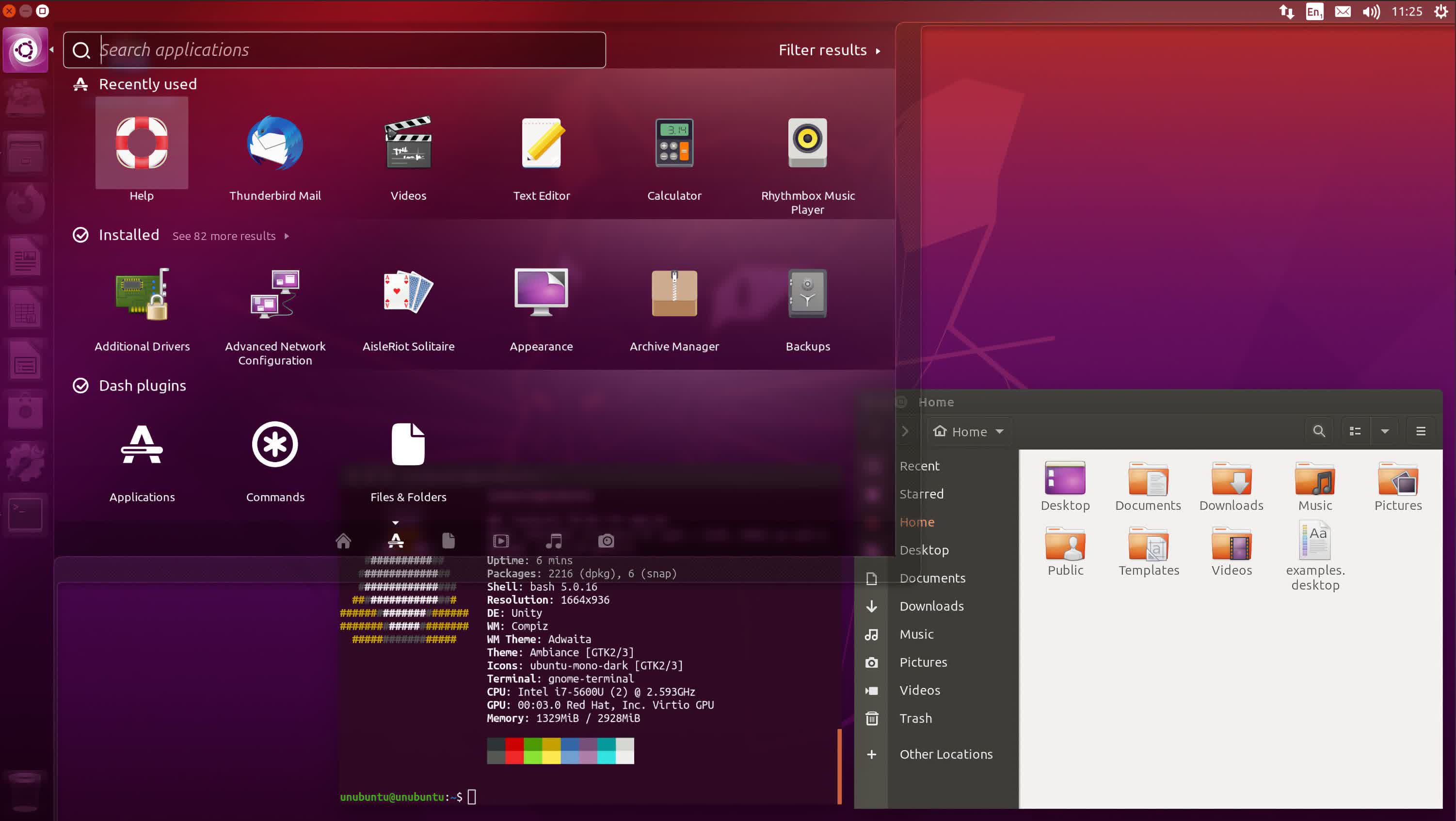
For virtually folks though, Linux offers a wealth of customization opportunities -- starting from the choice of the Linux distro itself! Each distro is unique in its own way. Nosotros refer the reader to this article we wrote a while back for a rundown on many popular choices.
Even within a distro, you lot tin customize the expect and experience by choosing unlike window managers, blitheness choices, desktop options, yous name it. And with a strong and vibrant customs, you can typically get the best tech support on many forums for what yous might be looking for.
Linux doesn't have everything though. For case, sure applications might be specifically coded up for a Windows or Mac surround, and thus not work in Linux. In that location are a plethora of open up-source alternatives that you can use, but certain things (like games) might be glaringly missing. This has started to change -- Steam has begun supporting many games on Linux -- just these are some merchandise-offs yous'd demand to consider before deciding to abandon Windows altogether for the open-source life.
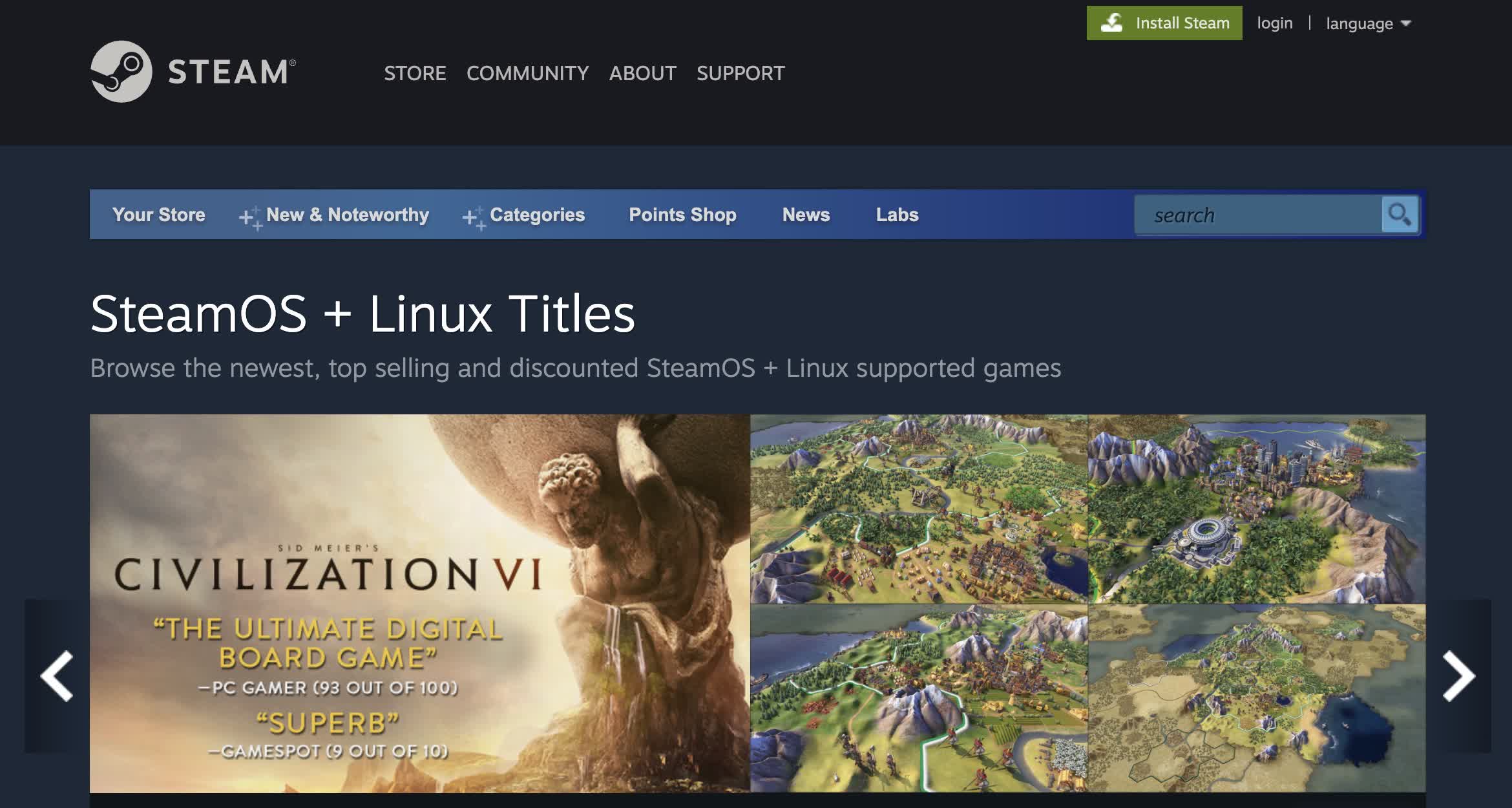
Just again, why abandon anything? Why not install both Windows and Ubuntu side-past-side, and benefit from the best of both worlds? This is precisely the concept of "dual booting," and it requires just a little bit of guidance to get you along the fashion.
Before jumping in, nosotros wanted to requite a bit of an explainer on what is going on underneath-the-hood in your figurer when dual booting. The following section isn't a requirement to dual booting, but will provide a certain groundwork in the various choices and complexities most why in that location needs to exist a guide on this in the kickoff place.
What Happens Underneath the Hood at Bootup?
When yous press your PC's power button, the motherboard takes hold and begins the kicking process. Control is handed off to the BIOS, which will run some basic diagnostics and check that the required hardware is in place and functional (RAM, storage, keyboard, mouse, etc).
The BIOS volition and so seek the master boot tape to begin booting upwardly the OS and allow you to start running applications on your hardware.
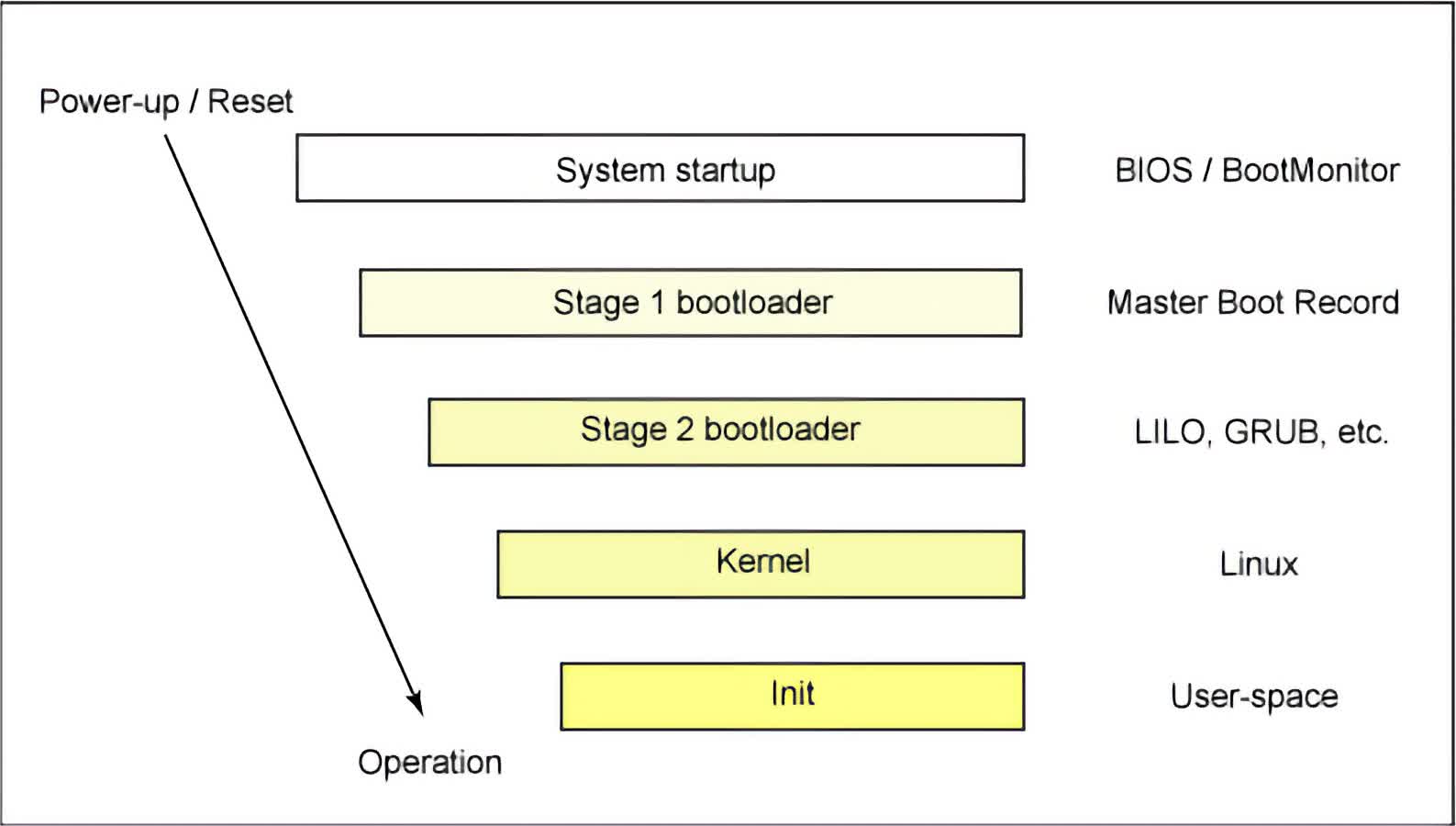
The primary boot record (MBR) is typically stored every bit the starting time block of a bootable disk (whether a HDD, SSD, USB drive, etc). The MBR location is hardcoded to make sure it can be institute during the boot process. Its chore is relatively unproblematic: observe and boot the OS. All the same, this is where some of the magic begins.
The MBR itself is too small to include all the information on how to boot an OS. Instead, it typically points to a bootloader, which is tasked with the actual process of reading the OS details and loading the necessary files into RAM, and begin the general process of preparing the Os to exist used. Dissimilar OSes typically accept different boot loaders. Windows naturally names it the Windows Boot Manager, while on Linux the bootloader is chosen grub.
When dual booting, you lot at present want to introduce multiple OSes into the mix, and also give yourself the option to select the OS you wish to boot upward from. How exercise yous exercise that? Well, you need an OS for selecting the Bone! In the Linux globe, that "operating system" is (besides) chosen grub.
The full general simplistic procedure for dual booting and then is as follows:
- Install the offset OS. Information technology is highly recommended to get-go with Windows, since grub can easily recognize Windows, while the Windows Kick Managing director is optimized to piece of work just for Windows.
- Partitioning the deejay. Split upwardly your deejay to provide storage infinite for each Bone separately.
- Install the second Os. In this example, that would be a Linux distribution such as Ubuntu.
Once the installation is done, you will automatically overwrite the Windows bootloader with grub.
Grub and then scans the deejay, and identifies all the different Bone versions installed on it. It will tape the disk location of each Bone' bootloader, and then that information technology can jump to the respective bootloader in one case the user makes their choice.
Grub is typically installed as part of the Linux installation process for most distros (such equally Ubuntu). This makes it like shooting fish in a barrel to just follow the installation guide, and the process is seamless. Installing a new OS requires a wink bulldoze that is separate from the main storage, since you technically accept to boot from the USB to perform the installation of the first and second OS.
Yous do not need to necessarily know all of this data to dual boot your PC. We'll explain each procedure along the mode, just feel gratuitous to jump dorsum to this section if you lot're curious what each step is doing.
Before you Start
In that location are sure things yous need before commencement, every bit well equally a few highly recommended things to keep in mind. In this tutorial, we'll be dual booting Windows 11 aslope Ubuntu 20.04 LTS (long term back up).
The basics:
- Make certain your PC satisfies the OS requirements for Windows xi.
- Make sure your PC satisfies the Os requirements for Ubuntu 20.04 LTS:
- 2 GHz dual-core processor
- 4 GB RAM (only 1 GB can work)
- 25 GB of hard drive space
- VGA capable of 1024×768 screen resolution
- Enough storage space to hold both operating systems.
- Co-ordinate to current specifications, the recommended size of Windows xi and Ubuntu LTS 20.04 is 25 GB each. So the minimum storage medium should have at to the lowest degree 50 GB of space.
- We highly recommend dual booting with at least 128 GB of storage.
Y'all will need ii (2) flash drives for the installation procedure, each with at least 8GB of storage space. We recommend at least 8 GB for the storage medium that will exist used to install Ubuntu, and at least 16 GB for the storage medium for installing Windows eleven. You should not employ a single wink drive to concord both images. This volition crusade a headache when trying to boot from the flash drive for installation.
When dual booting, y'all can decide how much storage space to classify to each Bone. At that place is one very important caveat to continue in mind though: while using Ubuntu, y'all will take access to all your Ubuntu files too as your Windows files through the file system.
All the same, when you are in Windows, you will not be able to access the files on your Ubuntu partition. The reason is that Windows does non support the Linux file organisation, including ext4. As a result, Windows cannot direct read or detect an ext4 sectionalisation or device.
A simple workaround is that you tin still have multiple physical drives in your system, and use the "other" devices for shared file access. As long every bit the secondary drives are formatted in an NTFS file format, so the additional drive will be visible while you are in either OS.
Finally, fifty-fifty though you can technically dual boot across two different SSDs, we would not recommend information technology. It adds a lot of complexity that might not be worth managing and debugging (as explained briefly in the previous department).
Step-by-Step for Dual Booting
Afterwards checking that you lot have your PC up to spec, decided on an SSD for the installation, and take your two flash drives on the set, you can dive correct in and begin the process!
1. Download the ISO for each operating system
Y'all can download both Windows 11 and Ubuntu 20.04 ISOs directly from our download section.
2. Create bootable pollex drives for each Bone
Later the downloads are complete, you'll need to move them over to a wink drive and brand the flash drives bootable. Unlike copying files directly onto a flash bulldoze, making the drive bootable requires calculation certain metadata to signify to the BIOS that the drive includes OS-related files during bootup. The utility tool will do that automatically for you.
2.1 Download a utility tool for creating bootable USB drives
There are plenty of tools for this, but we recommend Rufus. Not only is information technology a simple tool, simply it also works well for both Windows and Ubuntu ISOs.
2.2 Create a bootable thumb bulldoze for Os one: Windows xi
This stride depends on whether or not you lot plan to dual boot on a automobile that has Windows xi installed on it (in other words, you plan to just add Ubuntu to a pre-existing organisation), or if you are installing on a new car without any operating systems.
If y'all already have Windows installed every bit your first OS, then you lot can skip forward to Step 2.3, and you just demand to ready i bootable flash drive containing Ubuntu.
Otherwise, continue forrad past using Rufus to create a bootable wink drive with Windows 11. The paradigm below shows our configuration.
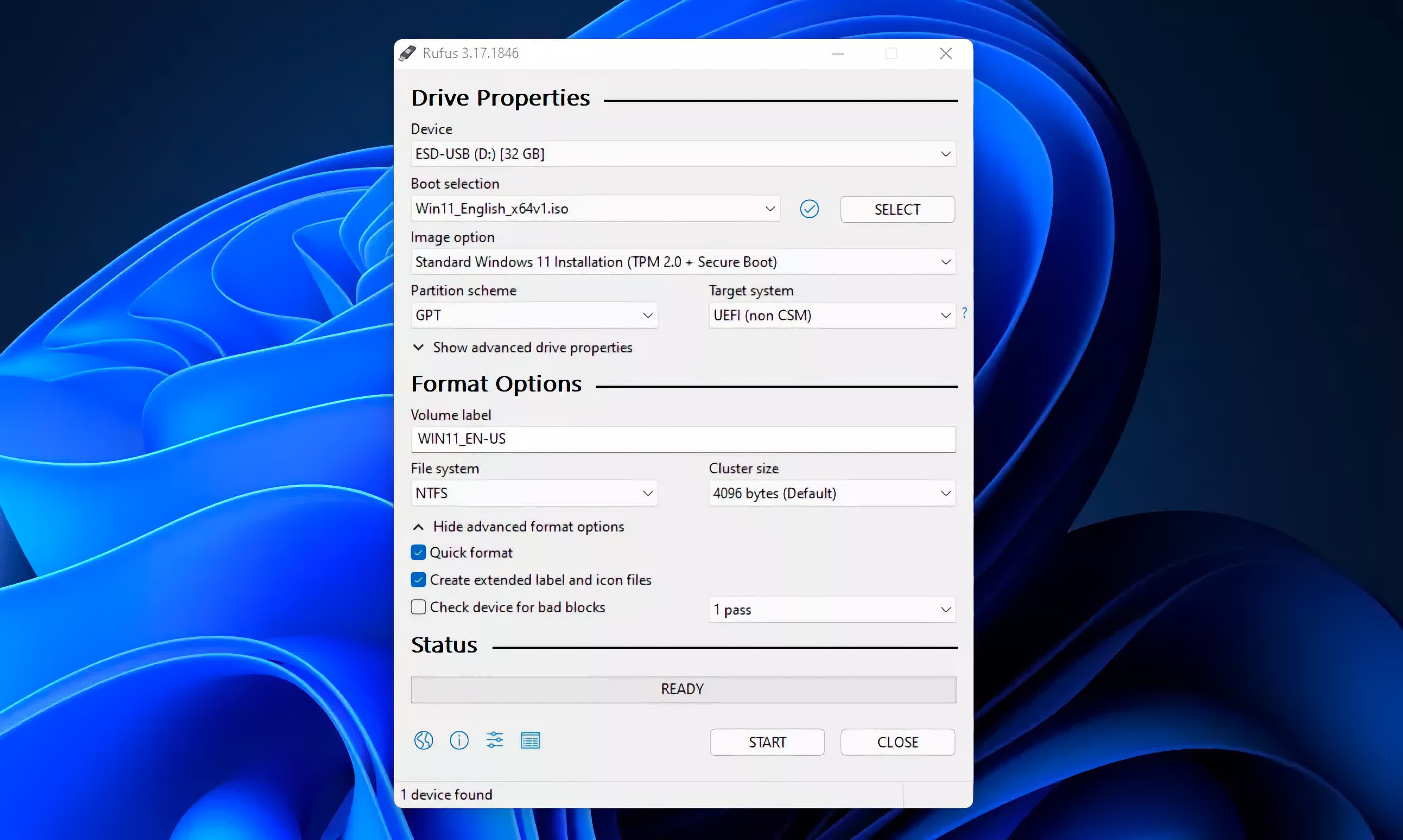
2.iii Create a bootable pollex drives for OS ii: Ubuntu
Follow the same process equally above, and create a bootable wink drive for the 2nd Os you will be dual booting. Retrieve: utilise another USB drive altogether, to ensure that each flash drive contains only 1 bootable operating organisation on information technology. In fact, trying to apply a unmarried flash drive for both won't work, as the second OS will force you lot to format the bulldoze earlier preparing it.
Below is the configuration we used for creating our bootable USB bulldoze with Ubuntu 20.04.
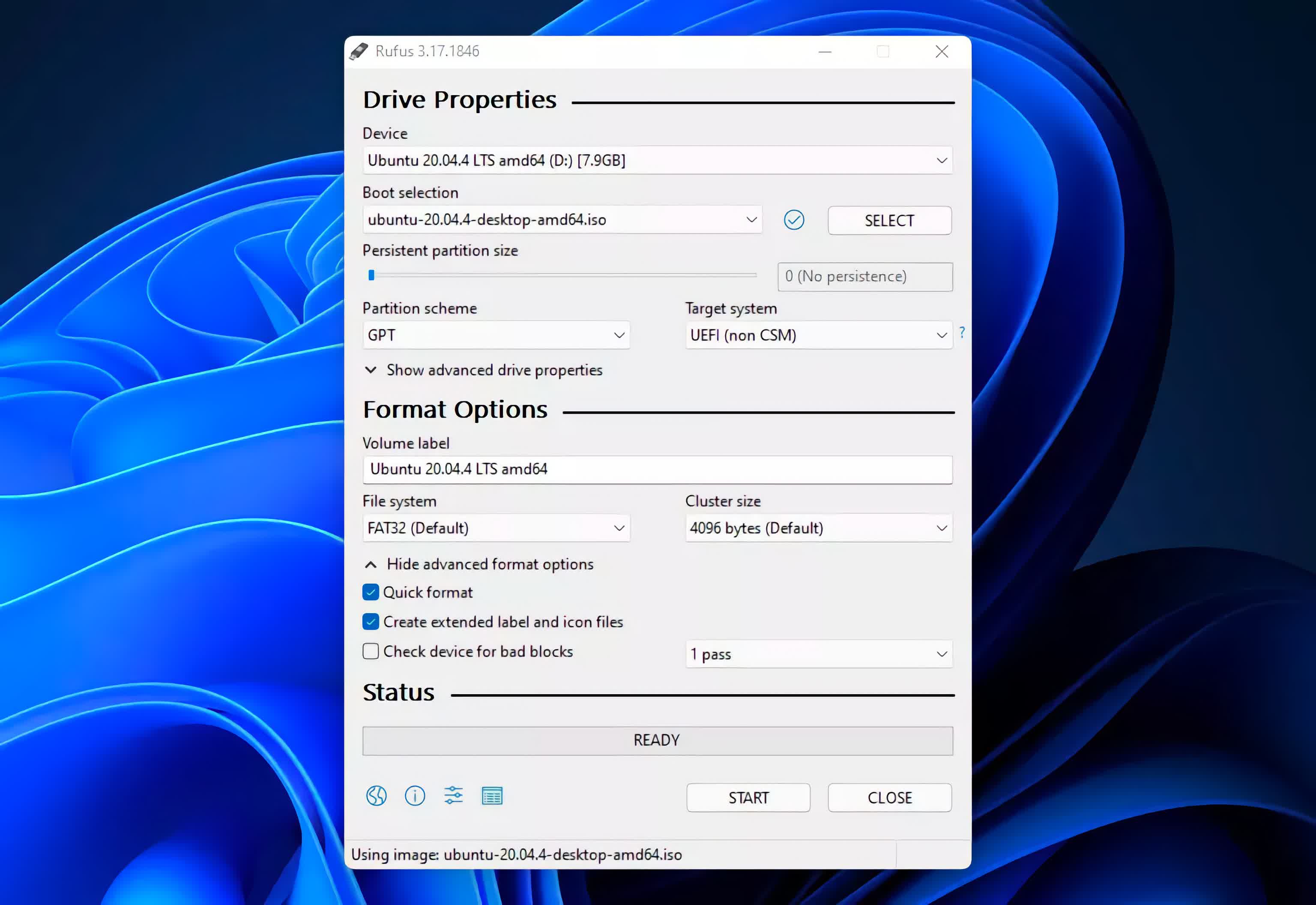
iii. Install Bone 1: Windows eleven
If you already have Windows 11 installed, you can skip this footstep. Otherwise, plug in your Windows 11 wink drive, and become through the steps to install Windows.
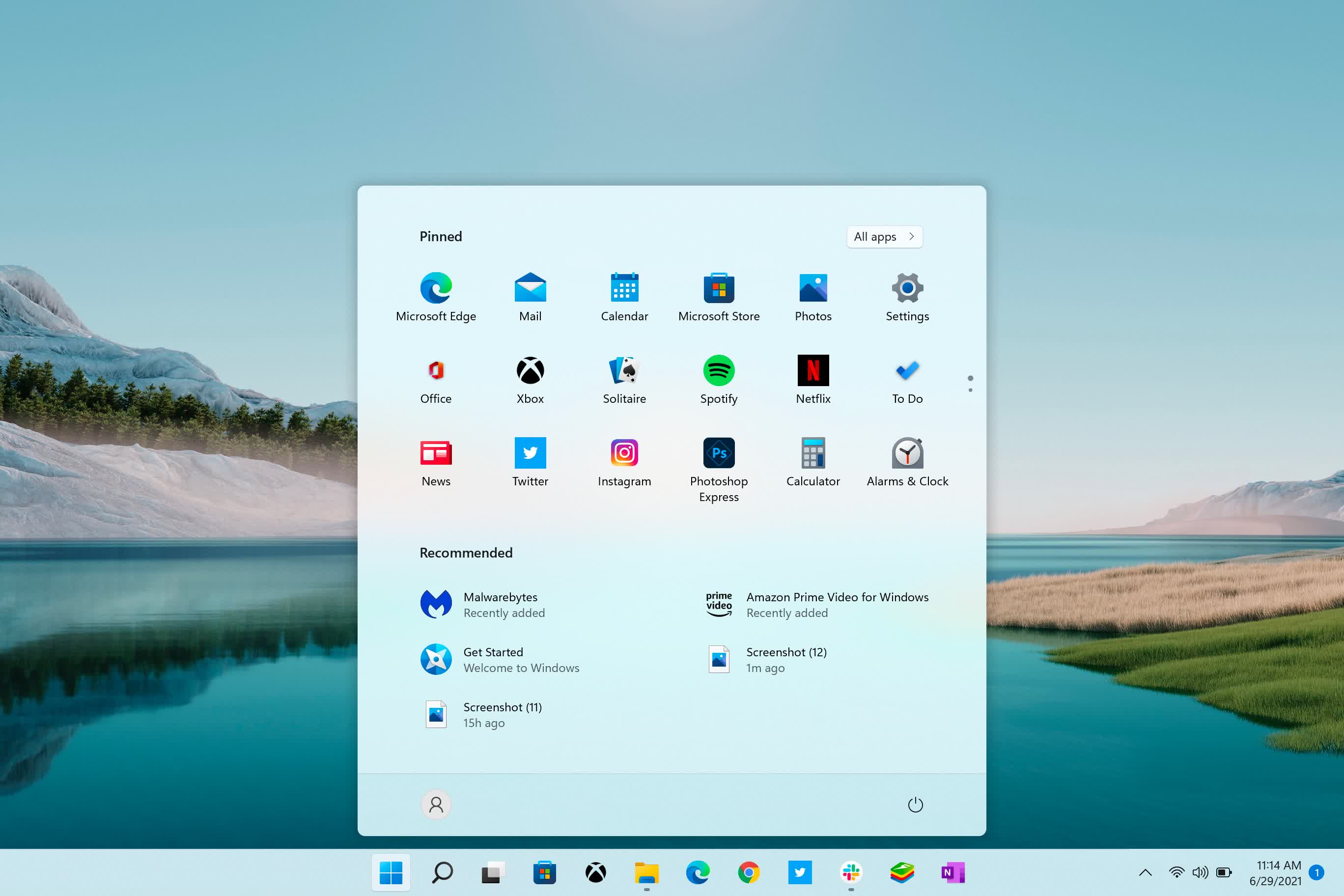
4. Partition Management
After installing Windows 11, boot upwards your PC into Windows and launch the Disk Management tool (Windows Fundamental + 10, select Disk Management from the listing).
Select the current disk which has Windows eleven installed, and then right-click and choose "Shrink Volume." In our example below, that is the C drive, which is at approximately 100GB.
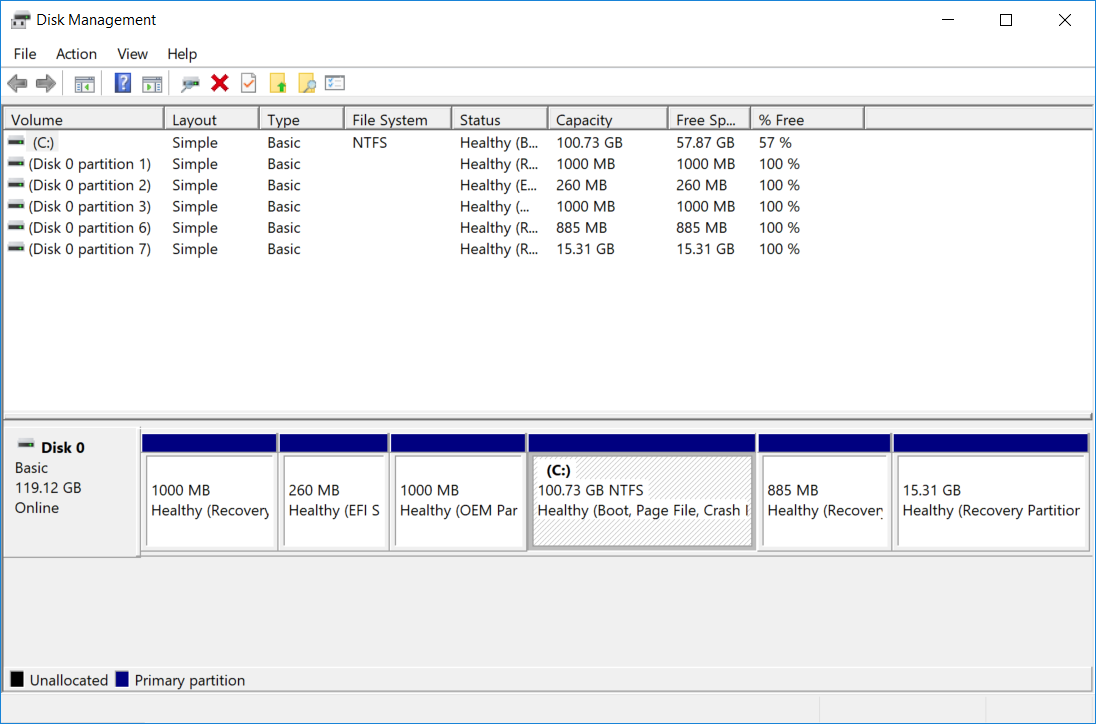
In the pop-upward window, enter the amount of infinite you want to reduce the deejay space past and click the "Shrink" push to execute. In our instance, the bulldoze already has data in the Windows partition, so nosotros will only shrink it by ~32 GB.
Remember to backup your files before performing any disk management operations.
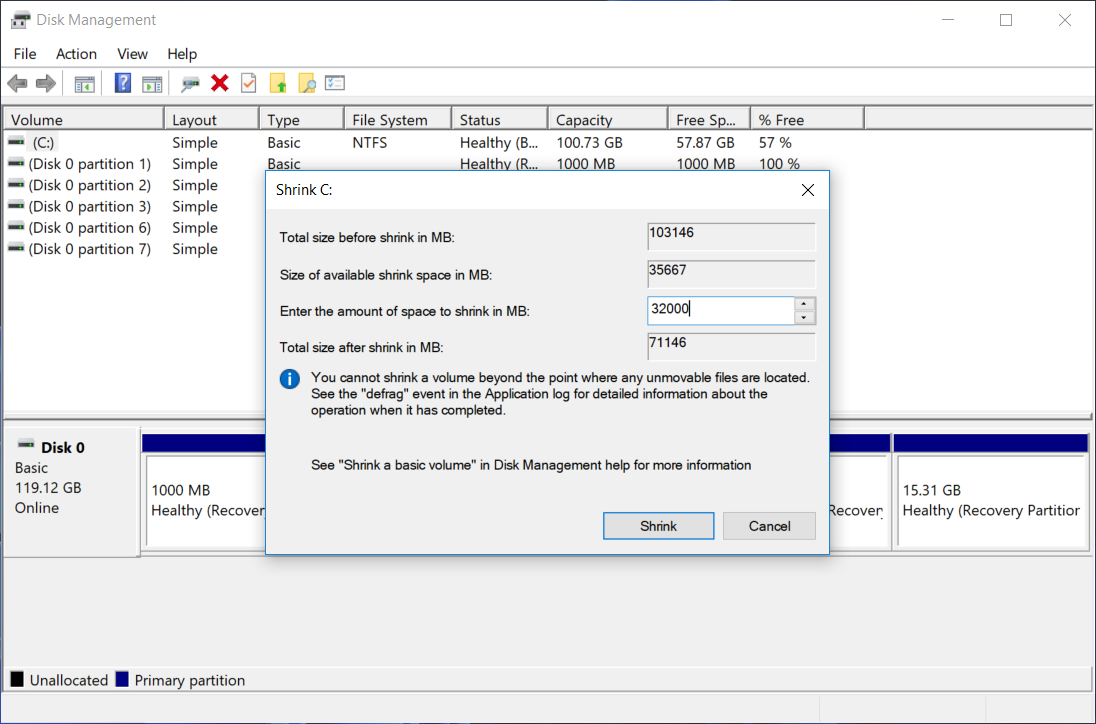
After performing this step, you volition accept "Unallocated" space on the deejay at about ~32GB, which we will use when installing Ubuntu for the dual boot.
The Windows partition is now reduced to ~70GB, every bit shown below.
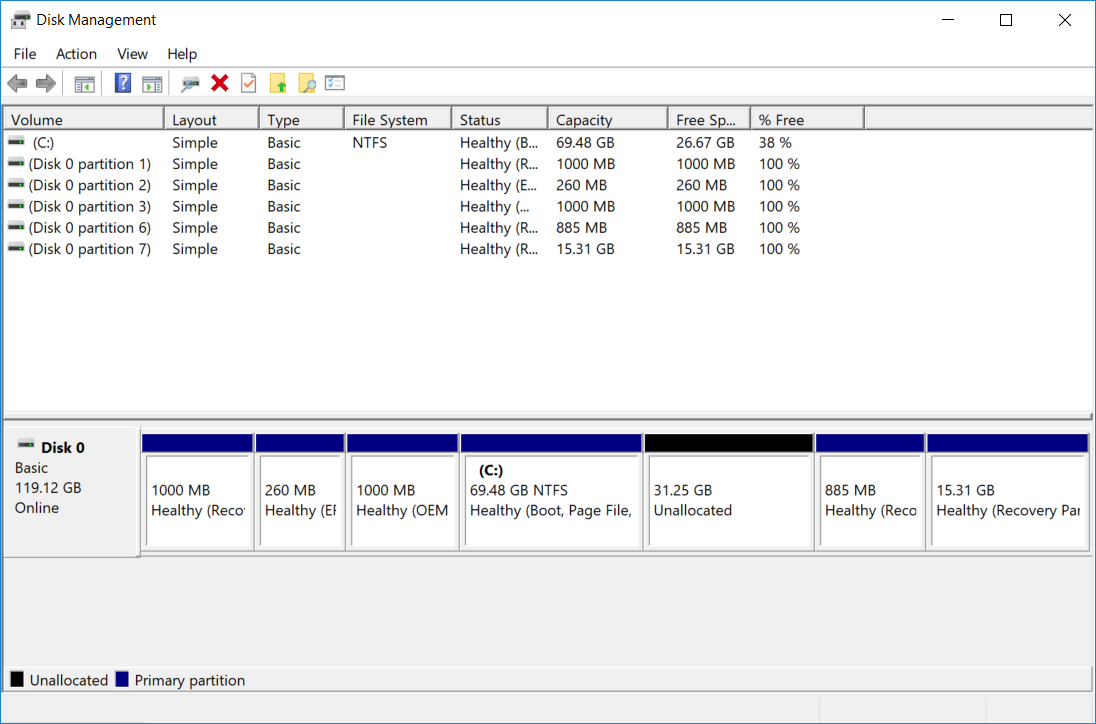
v. Installing OS 2: Ubuntu 20.04 LTS
After preparing your deejay for Ubuntu past partitioning your bulldoze, restart your reckoner with the Ubuntu wink drive in your PC.
Kick into Ubuntu using your machine's boot menu, typically past pressing the F12 button during boot (or, depending on the motherboard, the push might instead exist Escape, F2, or F10).
Alternatively, hold Shift while clicking on "Restart" in Windows. That volition show a menu every bit shown below, where you can select "Apply a device". When your machine boots, it will automatically boot from the Ubuntu flash bulldoze.
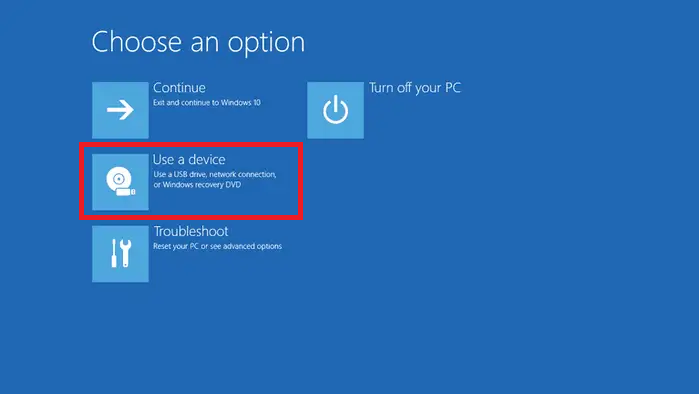
5.ane: Begin installation
You should see a welcome screen every bit shown beneath, assuasive y'all to "Try Ubuntu" or "Install Ubuntu."
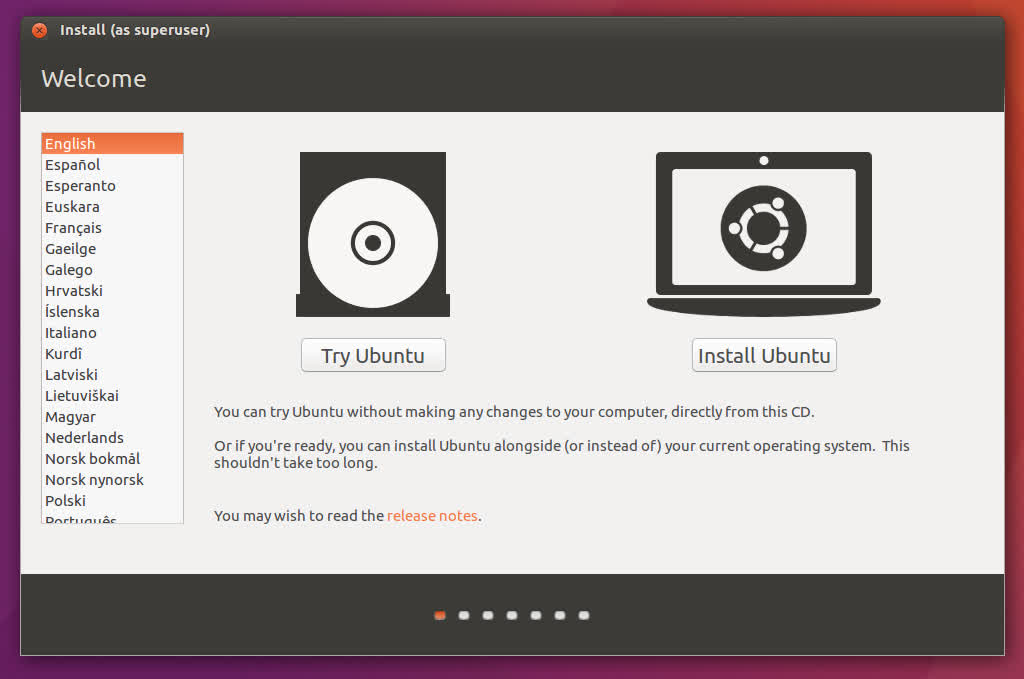
Y'all can immediately brainstorm the installation process by choosing "Install Ubuntu," or you can explore Ubuntu from your live USB.
If you go with "Endeavor Ubuntu," you can begin the installation process at whatsoever point by choosing the "Install Ubuntu xx.04.four LTS" icon on the desktop.
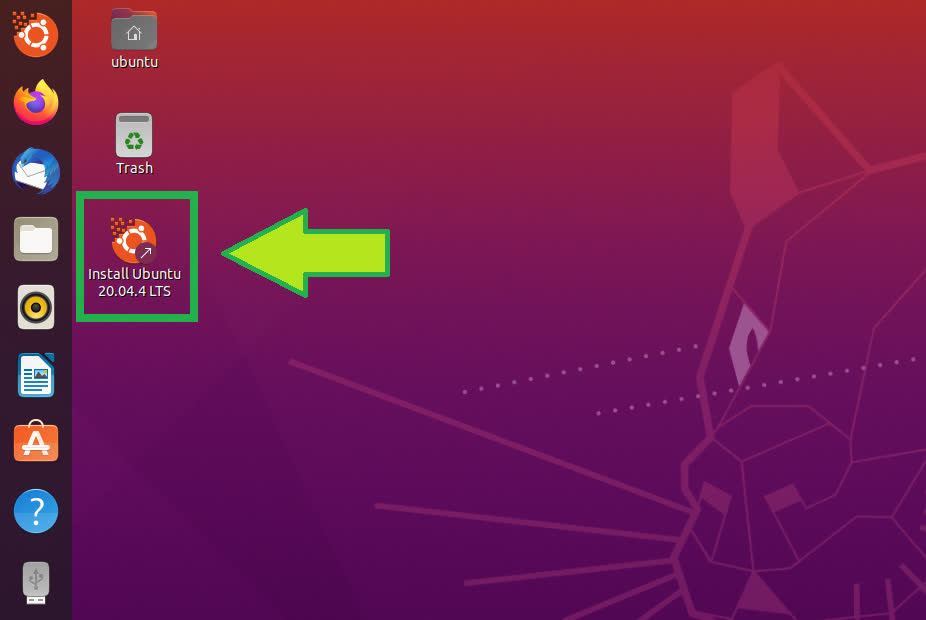
5.2: Linguistic communication Selection
The Ubuntu installation begins with the language and keyboard layout. Select your preferred choices, and continue with the installation.

5.3: Wireless Access and Other Updates
Afterward selecting your language, y'all will be asked to input Wi-Fi settings for your home network. This is optional.
If you lot exercise, the following footstep will ask about updates and other software downloads to exist part of the installation procedure. Again, this is optional, since yous can ever perform the updates and firmware installations after you finish the dual booting procedure.
To speed up the installation procedure, nosotros suggest skipping optional downloads for afterward, and proceeding with the "Normal installation".
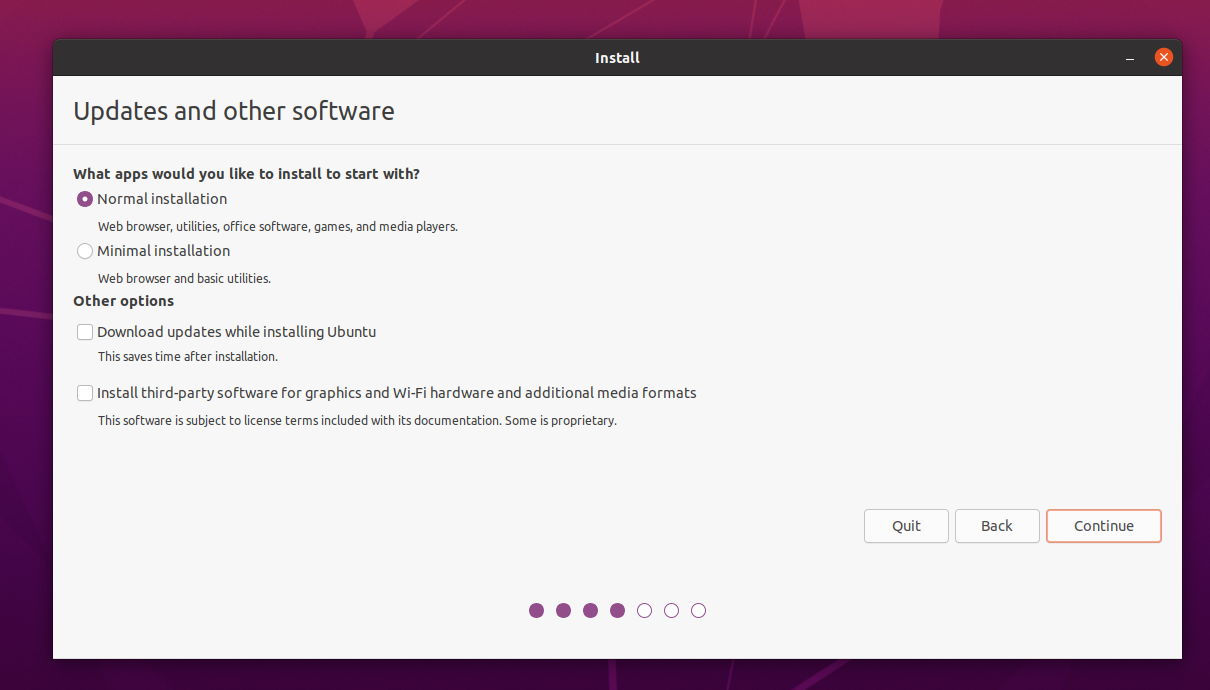
5.4: Installation Type
This is the disquisitional footstep: telling the installation process to install Ubuntu and Windows on the same disk and side-past-side, rather than overwriting your Windows sectionalization.

The showtime choice, "Install Ubuntu aslope Windows Boot Manager," is the easiest and preferred way. If your deejay has enough space on it, then proceeding with this method will provide you with a simple divider to decide how much infinite to partitioning to your Windows OS and how much to sectionalisation for Ubuntu.
We advise allocating at to the lowest degree 25 GB of disk space for Ubuntu, as per the installation requirements.
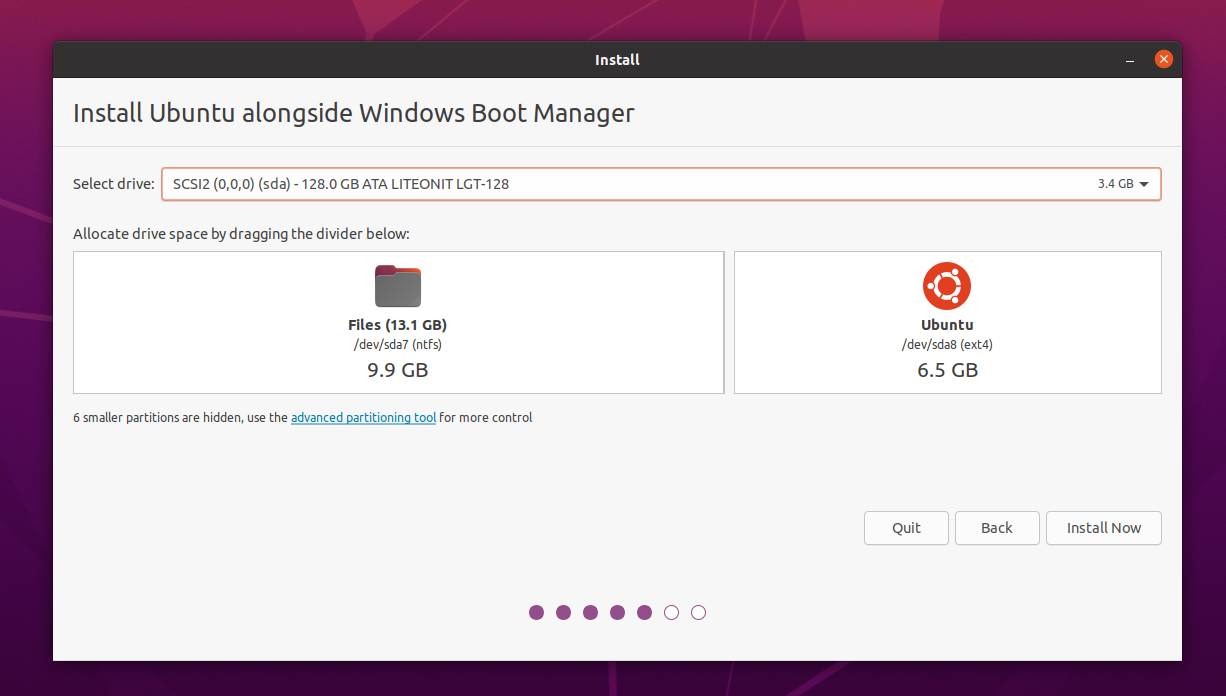
For various reasons, this method might non work (or be available altogether). In our setup in preparing this guide, our 128 GB deejay did non manage to automatically place all the free infinite, and only left the states with vi.5 GB of disk infinite for Ubuntu.
In nearly scenarios, you'll probably need to select "Something else" for the Installation Blazon, and manually prepare your deejay for the dual kicking.
Choose your SSD from the drib-downward carte du jour at the bottom ("Device for kicking loader installation"), which volition populate with the various partitions on your disk. Next, detect the free space you've set aside from Footstep 4 in a higher place. While it might not be super obvious which segmentation that is, you tin look for the "free space" name nether "Device", and check the size.
In our case, we had allotted roughly 32 GB for Ubuntu, and thus we find the partition with the closest disk size as highlighted below.
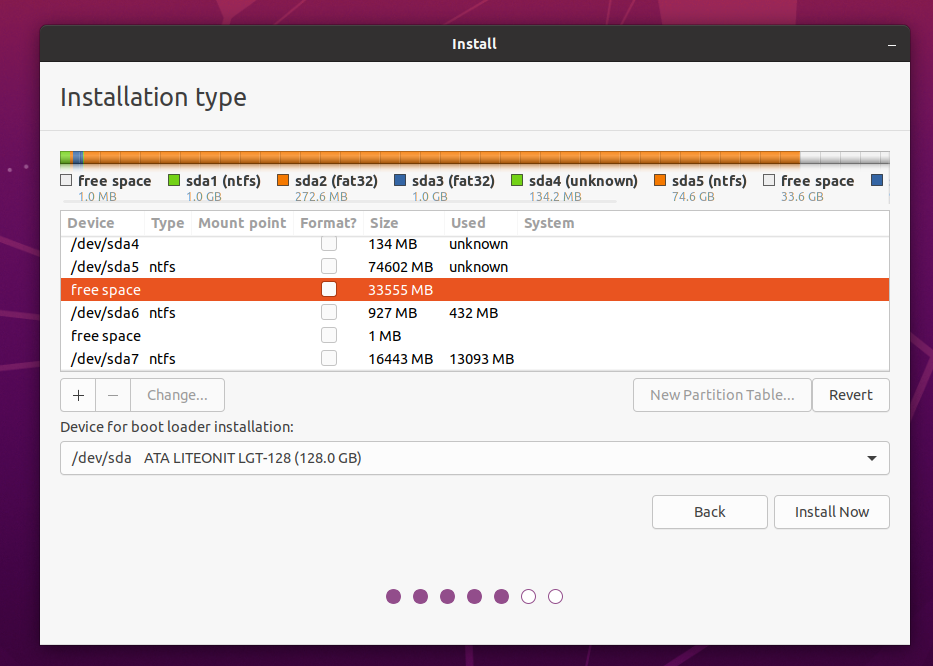
Now, click on the "+" sign to create a new partition. You volition get a pop-upward similar below, allowing you to select the partition type and size. We will need to manually create two partitions out of the free space: i for the file system and one for swap space.
The first division is for the actual file system, which volition be in the ext4 format. Prepare the mount point to "/", and make sure it is a "Primary" sectionalisation type and the location is from the "Starting time of this infinite". Notice that we reduced the size past almost 4 GB, which nosotros will utilise for "swap" infinite, described side by side.
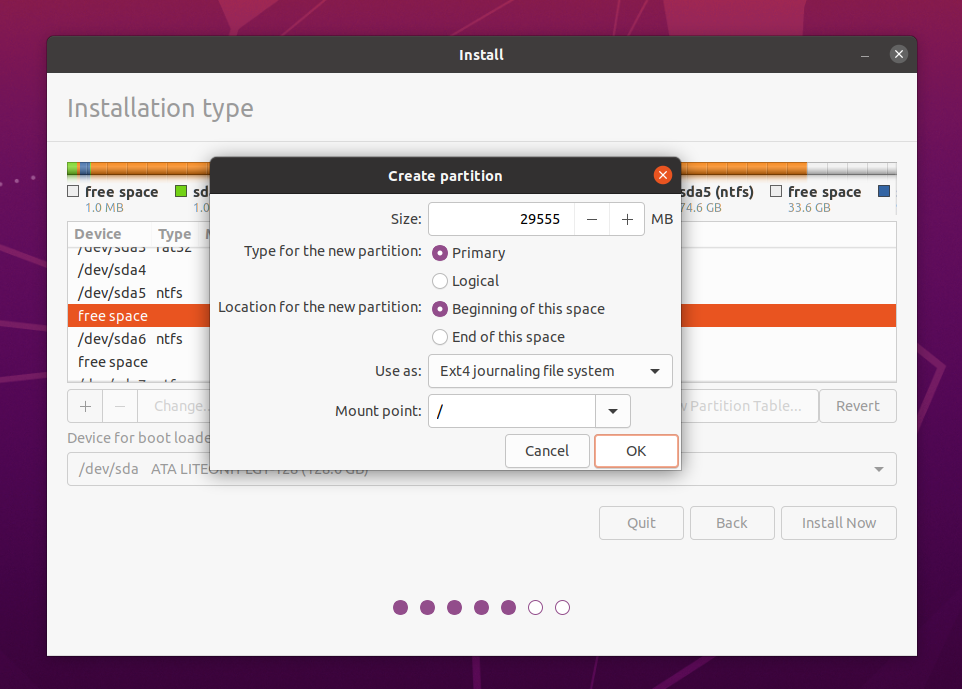
Side by side, choose the remaining free space (in our example, ~4 GB), and create a new partition equally "swap area." Swap space is essentially reserved space on the drive to be used if the physical RAM becomes full, to swap pages in and out of RAM.
The suggested amount of bandy space depends on the amount of physical RAM in your system, and the amount of disk space you want to classify equally swap (which you won't exist able to use for files). The general rule of thumb is:
- Systems with less than two GB RAM - 2 times the corporeality of RAM
- Systems with 2 to eight GB RAM - the same amount of RAM
- Systems with more than than 8 GB RAM - at least 4 GB of swap space
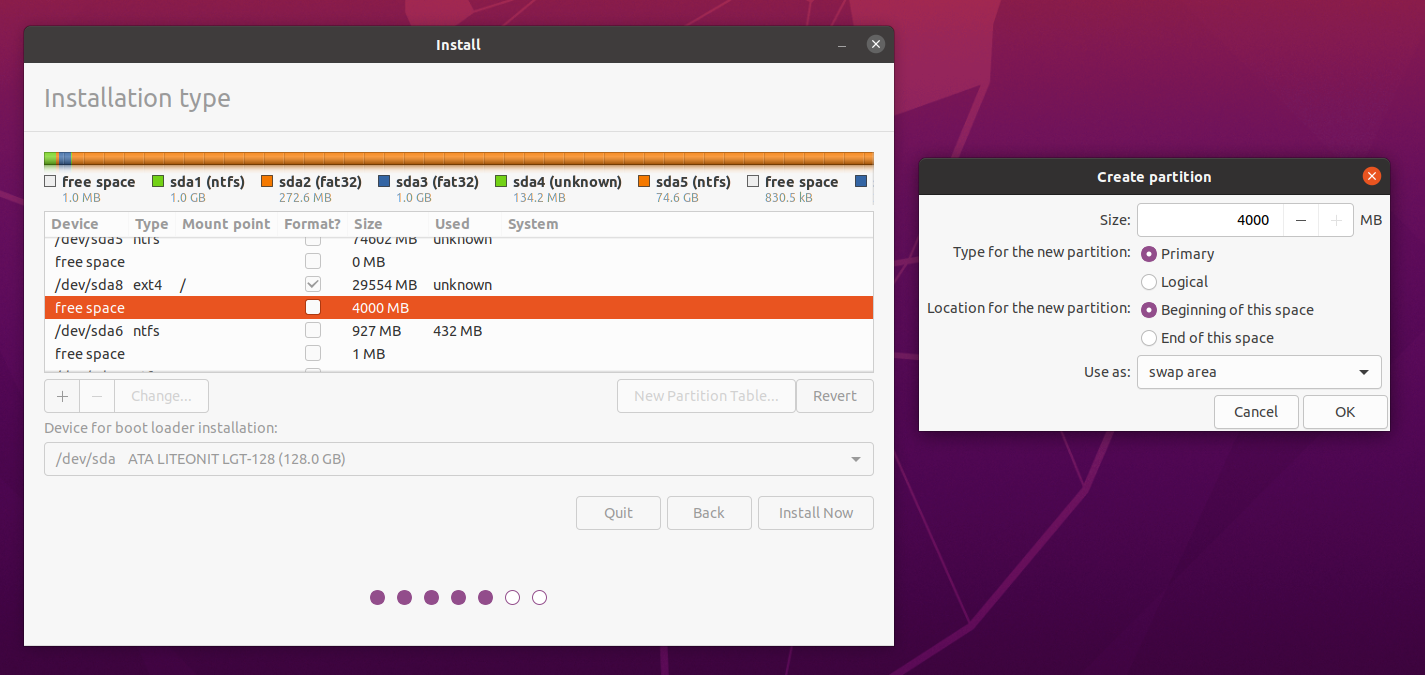
Everything should at present be prepared, and you can continue the installation of Ubuntu by clicking the "Install Now" button.
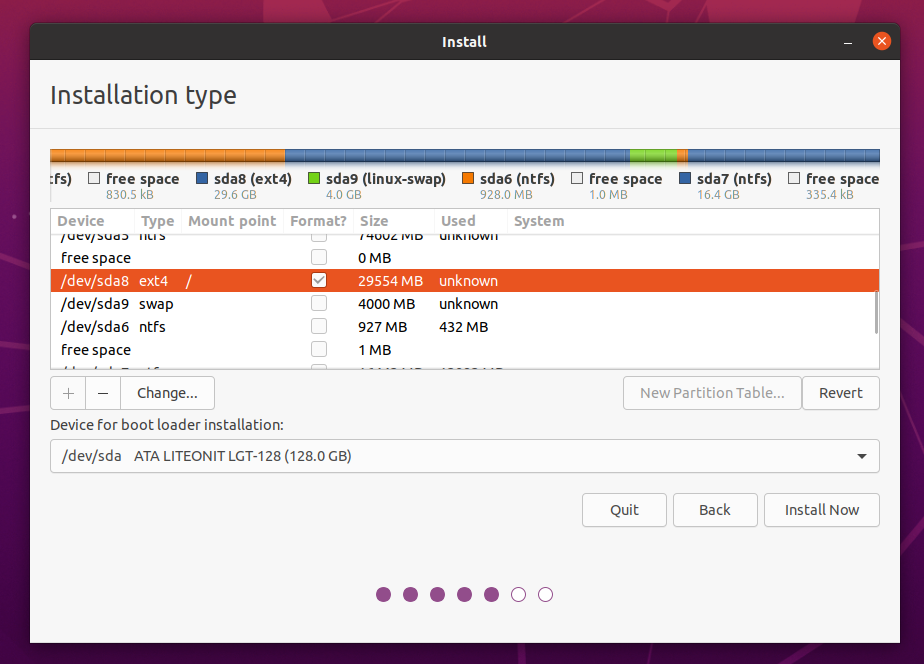
You lot will go one more confirmation describing the changes y'all simply made. In this case, you lot will make two new partitions in the gratuitous space: an ext4 division for the Ubuntu file arrangement, and a bandy segmentation for swap space.
If everything is in order, click "Go on." At this point, the disk volition begin formatting and applying your changes, followed by the Ubuntu installation.
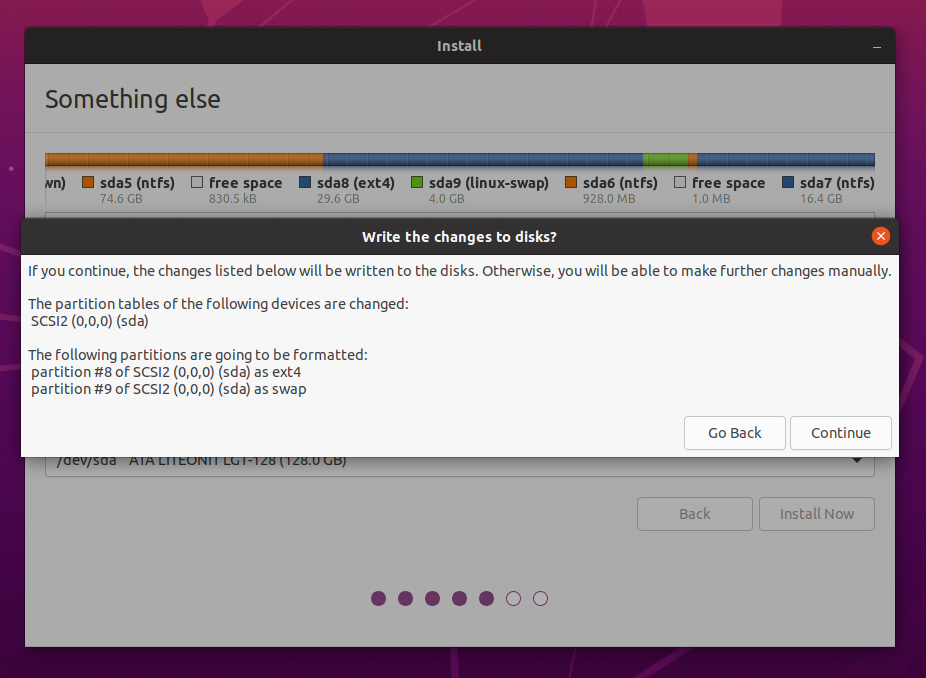
Go on through the rest of the installation until it is complete. In one case done, you volition be asked to reboot your auto.
6. Reboot and select the Bone y'all want to use
After y'all finish installing Ubuntu, you will see the Chow menu every time you boot up your PC. When Chow shows up, you can select whether to enter into Ubuntu or boot into your Windows 11 sectionalisation.
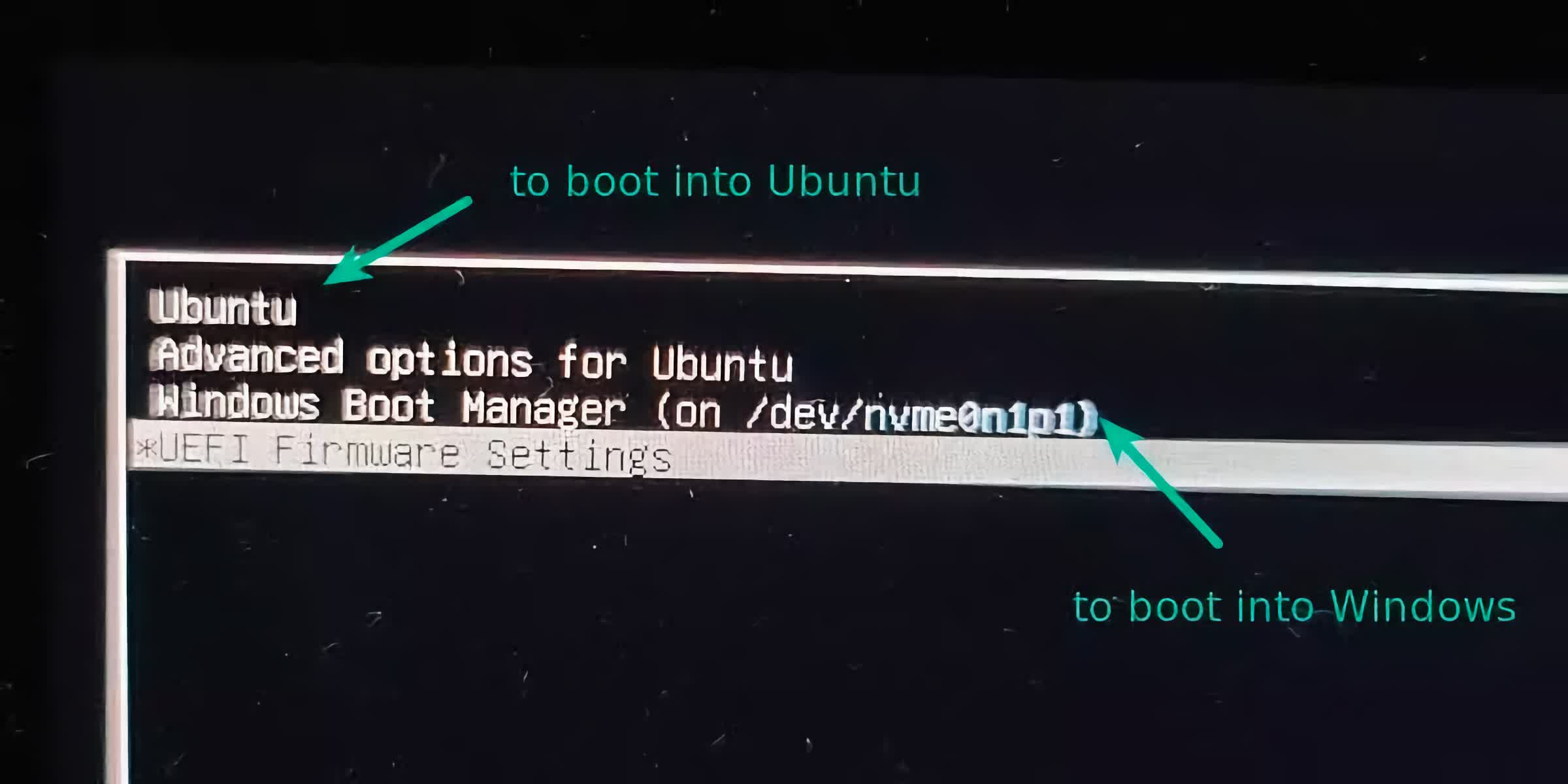
And that'south about it! Your PC now tin can run both Windows and Ubuntu from the same SSD.
Now, you can go about customizing your Linux environment, or boot back into Windows equally if null changed.
More than Resources
- Linux control line tools
- Dissimilar flavors of Linux
- File system explainer
Source: https://www.techspot.com/article/2422-dual-boot-windows-ubuntu/
Posted by: trosclairunflithen.blogspot.com

0 Response to "How To Dual Boot Ubuntu And Windows"
Post a Comment